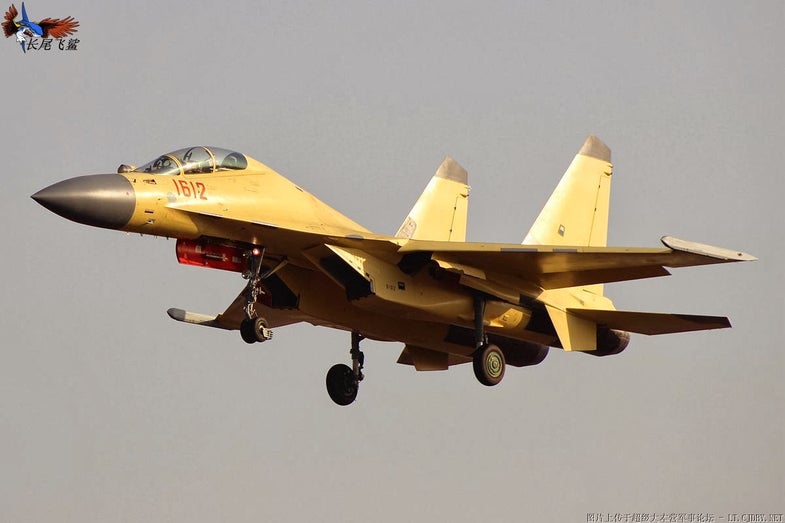Chinese Air Force Takes Delivery of New J-16 Strike Fighters
By the end of April 2014, the People’s Liberation Army Air Force (PLAAF) has taken delivery of a regiment of...

By the end of April 2014, the People’s Liberation Army Air Force (PLAAF) has taken delivery of a regiment of J-16 multirole fighters, with an expected initial operational capability in late 2014. Marrying the survivability and air combat power of the Russian Su-30MKK airframe with the Xian JH-7A’s versatile arsenal, the Shenyang J-16 strike fighter is notable for its full suite of fully indigenous Chinese guided munitions. While the Su-30MKK was restricted to firing only Russian-made antiship and bunker busting bombs, the domestically designed JH-7A carried a full range of Chinese super and subsonic anti-ship missiles, air to air missiles, satellite guided bombs, cruise missiles and electronic countermeasure (ECM) jammers. However, the JH-7 did not have radar guided air to air missiles, which makes it vulnerable to other fighters common in the region such as the F-16.

J-16
Publically available photos of the J-16 are hard to come by, given the work of Chinese censors. What we do know is that despite their similar missions, the J-16 is actually built on a different Su-27 Flanker airframe than the Su-30MKK (notable differences include the J-16’s cropped vertical fin tails vs. the Su-30MKK’s square topped vertical fin tails). The J-16 is the strike version of the J-11BS, a twin seat version of the Su-27K. The most important upgrade to the J-16 is an Active Electronically Scanned Array (AESA) radar, which is more powerful than the slotted array radars that the Su-30 and JH-7A have. The AESA radar allows the J-16 to intercept enemy aircraft at longer ranges than either of its predecessors, and to attack multiple surface targets simultaneously. The AESA radar would also be datalinked to other Chinese platforms, including unmanned vehicles, to increase their situational awareness.

J-16 Multirole Fighter
This addition offers a wider set of options for Chinese military planners. Multirole fighters like the Tornado IDS, F-15E Strike Eagle and now the J-16 are well suited for the challenges of high tech conventional warfare, by combining the air combat capability of fighters with the guided munitions capability of bombers. The J-16’s survivability and long range means it can match and even outnumber enemy fighters before going on to bomb their airfields, command centers and ships. And on the defensive, the J-16 can switch to a full air to air missile load to defend Chinese airspace against enemy aircraft.